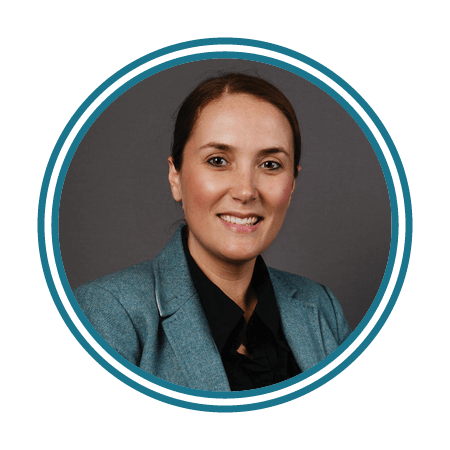The community hospital – frequently a nonprofit organization organized around community service, charity care, and serving the poor in multiple capacities – has been a cornerstone of our health system. Today, the majority of the 6,219 hospitals across the United States (2,978 or 57%) are nonprofit. As a nonprofit, this means that they do not pay certain local, state, and federal taxes, such as property and income taxes. This exemption is not insignificant: in 2020 alone, it amounted to $28 billion.
At the same time, the community hospital of fifty years ago is not the nonprofit health system of today. Healthcare in the United States is big business, and hospitals are a major part of that business, accounting for 31% of all healthcare dollars (rounding to an estimated $1.3 trillion in 2021). The community hospitals of yesterday, sometimes publicly owned and funded, have evolved, often becoming part of multi-facility, multi-billion-dollar health systems that span across multiple states. These large systems require substantial coordination and management, with executives often earning substantial compensation. In such circumstances – and in the zero-sum game of market politics and realities – hospital leadership is highly incentivized to view their primary mission as one of generating revenue – building more and more business – as opposed to the less concrete objective of conferring a community benefit. At the same time, the United States continues to face great disparities in access to and affordability of healthcare services.
The question then arises: does it balance out? Do nonprofit hospitals deliver a community benefit greater than or equal to $28 billion a year, the cost of their privileged tax status through their direct return on investment to the community?
This is an important question but also difficult to answer, as evidenced by decades of Congressional hearings and public discourse. It is difficult to answer because of the ambiguity and lack of objective criteria we (specifically the Internal Revenue Service (IRS)) have utilized in evaluating the effectiveness of nonprofit hospitals in relation to their mission and the centrality of the mission of community service to actual operations. The Affordable Care Act sought to address this gap, creating new requirements that must be met to maintain nonprofit, tax-exempt status. The most significant is the requirement to conduct a Community Health Needs Assessment (CHNA), a tool to assess community health and define community needs, and the development of a Community Health Improvement Plan (CHIP), outlining how the hospital will address those needs.
In this article, we will walk through the history of nonprofit hospitals as a primary provider of charity care and healthcare for poor and underserved populations, how the ambiguity of the 1969 expansion of the criteria for nonprofit status created an environment that allowed for drift from that central mission of direct charity care, and how the innovation of the CHNA and CHIP provides a framework for evaluating the impact hospitals have on the health and wellness of the communities they serve.
Understanding Charity Care and Community Benefit
Community hospitals are built on a foundation of charity. Many hospitals in the U.S. historically served the poor in multiple capacities. This history is the source of the justification for hospitals’ tax-exempt status. The federal government requires hospitals to provide charity care to maintain tax-exempt status. Charity care is free or discounted services to individuals otherwise unable to pay for care, but what constitutes charity care, who is entitled to it, and the valuation of the services delivered is largely left up to the hospitals, resulting in a great deal of haziness and ambiguity. This ambiguity has only increased since 1969, when the Internal Revenue Service (IRS) broadened the term to refer to the concept of “community benefit.”
Increasingly, community benefit involves less and less charity care – when calculated as a percentage of a hospital’s overall operational costs. A recent analysis by the Kaiser Family Foundation concluded that for most hospitals, charity care represented less than 1.5% of a hospital’s operating costs. This relatively low line item on a hospital’s budget is not because there isn’t a need for free or discounted services. Over a decade after the Affordable Care Act, about 40% of the US population has medical debt. What is more, another evaluation of 2018 data concluded that for-profit and nonprofit hospitals dedicated a comparable amount of resources and budget to charity care, with for-profit hospitals (in some categories) providing a greater percentage of charity care than their nonprofit counterparts.
Understood in the context of delivery of charity care, many nonprofit hospitals are not meeting their central mission to justify their nonprofit status.
While charity care is easy to define and quantify (even if the calculation is subject to bias as a hospital determines the price of its services), defining “community benefits” has been less straightforward. At least it has been until we get to the CHNA under the Affordable Care Act. The innovation of the community benefit definition in the Affordable Care Act was that it preserved the flexibility afforded in the past (allowing the hospitals to determine how best to serve and meet their mission) – while also creating greater transparency and a mechanism to monitor adherence to this largely self-defined objective of creating a community benefit.
Defining Community Benefits – THE CHNA & CHIP
Community benefits (as defined by the IRS and the Affordable Care Act) are the things that hospitals do that benefit the community their operating in. CHNAs and CHIP are the mandatory tools that hospitals must use to define and deliver these benefits. It is worth taking a closer look at just what the CHNA and CHIP are and how they operate.
At a high level, the CHNA is the vehicle that nonprofit hospitals use to identify the community’s unmet needs that can be addressed by the hospital serving the area. This last part is important. It’s not any community need, but those that are within the hospital’s capacity to address. The hospital must assess its hospital service area or HSA. When calculating the service area, “A hospital facility may take into account all the relevant facts and circumstances in defining the community it serves. This includes referencing and integrating population demographics and objective data sources. This includes:
- The geographic area served by the hospital facility,
- Target populations served, such as children, women, or the aged, and
- Principal functions, such as a focus on a particular specialty area or targeted disease.”
Just as important as the information that must be included is that which cannot be excluded. Hospitals may not exclude zip codes that include minority populations, the medically underserved, or those with low income. Additionally, the hospital may not avoid areas that include patients who qualify for financial services under the hospital’s financial assistance policy.
The CHNA and CHIP must be completed at least once every three years. It is an intensive and creative process that seeks to “comprehensively address [the community’s] health, formulate roles and responsibilities, create the multi-sector investments that improve health, and measure the impact of their investments.” It is also, therefore, a highly individualized process. When a health system has multiple hospital facilities, each facility must conduct its own CHNA and create its individual plan for improvement.
To conduct a CHNA, the hospital needs a lot of information. In addition to the hospital’s information from its daily work, it also needs secondary data (sources other than the hospital’s own data). This involves, among other things, engaging with the community and getting information directly from its residents. Through the CHNA, hospitals ask and answer: Who’s living in the community? How are they living in the community? What social determinants of health (SDoH) impact their health and well-being? Are people facing transportation problems? What languages are spoken in the community, and how does this affect access to care and services? Are there gaps in services or providers, such as behavioral health clinicians? Hospitals must also assess what services are available in the community and who provides them, thereby enabling potential partnerships or collaborations. The CHNA process is not only an inventory of gaps and resources but a time to start at the drawing table and brainstorm solutions.
Based on the findings of the CHNA, the hospital then puts together a Community Health Improvement Plan (CHIP). The CHIP explains which needs the hospital will address and how and which needs it won’t address and why. Importantly, while charity care remains a prominent element of community benefit, it is not the only source of community benefit. As we move towards population health and recognize the impact environments and social determinants play on the health and wellness of a community, charity care should not be the only benefit conferred. Therefore, this evaluation and planning process is also an important opportunity for the hospital to think creatively about how community needs and opportunities align with or inform the hospital’s strategies for population health and value-based care.
Finally, this process of inventorying and planning, as conducted by the hospital, is itself a meaningful “community benefit” because it identifies needs, catalogs existing resources, and determines how needs and gaps can be addressed. Because both the CHNA and the CHIP are meant to be public documents that are shared widely in the community, this is a valuable resource to other entities in the community, such as local government and community-based organizations that can use this information to help allocate limited resources and seek out partnerships with the hospital. Additionally, patients and providers in the community can use it to identify where to receive care and services.
Of course, a community hospital cannot resolve all community needs, but it is a central stakeholder, convener, and catalyst. Hospitals face a big task, as defined by the CHNA and CHIP process. Improving a community’s health and wellness will take time, resources, persistence, and patience. As with most things, it is less a case of giant leaps and more a question of continuous, incremental improvement and iteration. The structure of the CHNA process, with its tri-annual cycle and reliance on measurable objectives and activities, further reinforces this central principle.
COMMUNITY BENEFIT = IMPROVED COMMUNITY HEALTH OUTCOMES
Ultimately, the primary goal of community benefit is to improve the health outcomes of the community served by the hospital. This creates a defined, measurable goal by which each hospital can measure its progress and adherence to its mission based on its self-identified objectives. As a process, it is flexible, creative, and transparent. In brief, it provides a mechanism by which we, as a society, can evaluate the costs and benefits of nonprofit hospitals as a tax-privileged community resource. And that is important because the nonprofit, tax-exempt status conferred on hospitals is a form of community trust – a trust that the hospital will do what is best for the health and well-being of the community.




